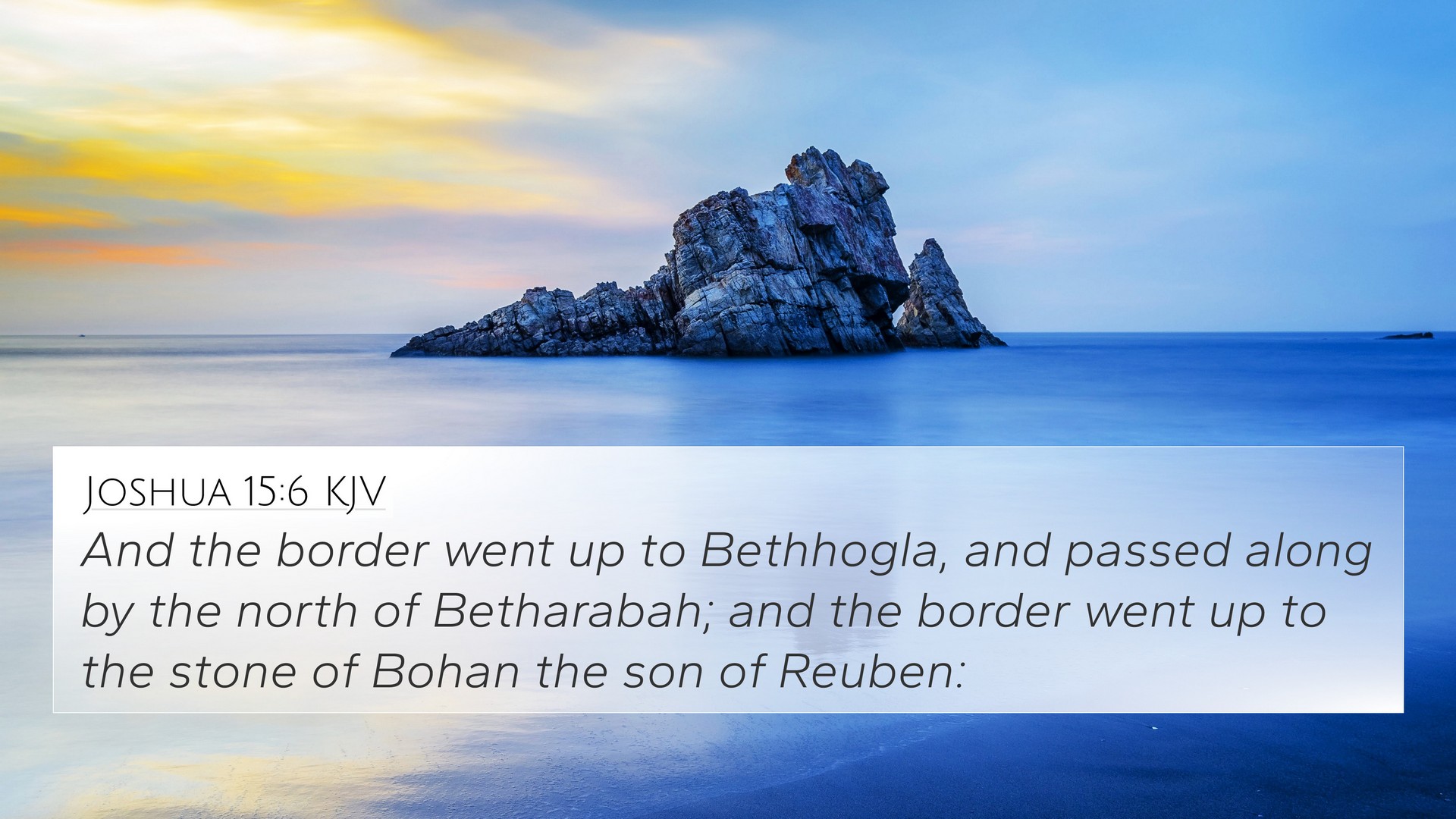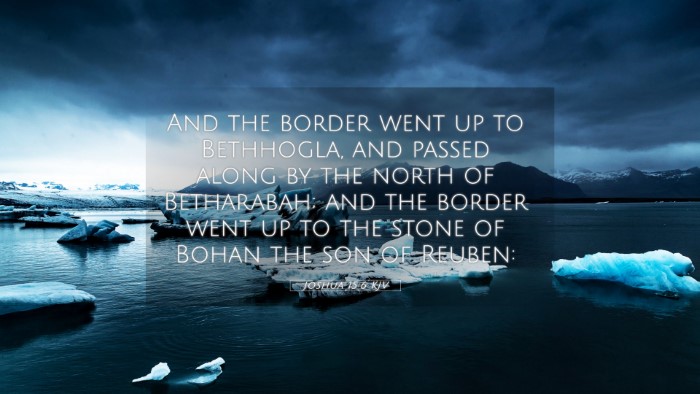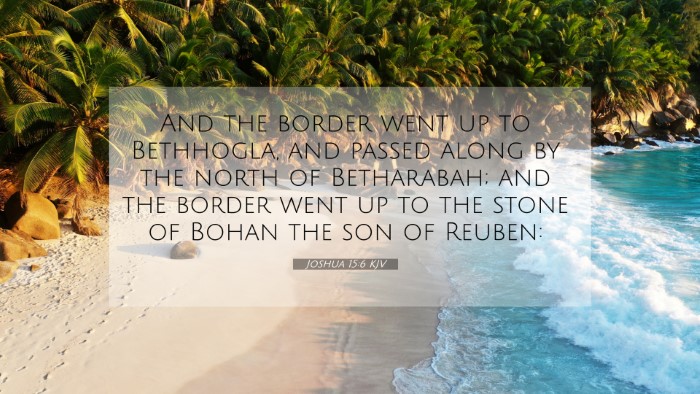Understanding Joshua 15:6
Joshua 15:6 states:
"And the border went up to Beth-hoglah, and passed along by the north of Beth-arabah; and the border went up to the stone of Bohan the son of Reuben."
Context of Joshua 15:6
This verse is part of a detailed description of the boundaries of the tribe of Judah, which was allotted a significant portion of land in the promised territory. The mention of specific landmarks is crucial in understanding the geography and the fulfillment of God's promises to the Israelites.
Insights from Commentaries
- Matthew Henry: Highlights the importance of land divisions among the tribes of Israel, noting how this act reflects God's faithfulness in providing for His people. The meticulous listing of borders emphasizes God's sovereignty and providential guidance in Israel's journey.
- Albert Barnes: Suggests that this border serves as a historical record, linking past events with current realities. Barnes also points out that the inclusion of places like Beth-hoglah and Beth-arabah marks significant locations during Israel's conquests.
- Adam Clarke: Emphasizes the precision of the border descriptions, stating that they serve to remind the Israelites of their heritage and God's promises. Clarke connects the geographical details to the broader narrative of Israel's identity and their covenant relationship with God.
Bible Verse Cross-References
To fully appreciate the themes and messages in Joshua 15:6, we can explore several cross-references that contribute to a deeper understanding:
- Deuteronomy 3:12-13: Discusses the territories assigned to the tribes, emphasizing God’s provision of land.
- Joshua 14:1-2: Illustrates the division of land among the tribes, reinforcing the context of Joshua 15.
- Joshua 18:11: Provides additional geographical context regarding the land allocations.
- 1 Chronicles 5:16: Connects the tribe of Judah with historical lineage and territory.
- Isaiah 11:12: Speaks of the gathering of the scattered people of Israel, tying back to the central theme of land and belonging.
- Matthew 2:6: References Bethlehem, a city within Judah’s borders, highlighting the ancestral significance.
- Hebrews 11:9: Mentions Abraham’s faith in God’s promise of land, connecting the Old Testament covenant to New Testament teachings.
Thematic Bible Verse Connections
Joshua 15:6 serves as a pivotal verse linking various themes throughout the Bible:
- Covenant: The promise of land made to Abraham is fulfilled as seen in Joshua’s allotments.
- Faithfulness: The meticulous details of boundaries reflect God’s unwavering faithfulness to His people.
- Identity: The delineation of land reinforces the identity of the Israelites as God’s chosen people.
Cross-Referencing Bible Study Methods
To conduct an effective Bible study involving cross-references from Joshua 15:6:
- Utilize a Bible concordance to identify related scriptures.
- Implement a cross-reference Bible study guide that provides insight into the connections between verses.
- Create a Bible cross-reference system using thematic categories to organize scriptures.
- Engage in a comparative Bible verse analysis to understand the similarities and differences in scripture message.
- Explore tools for Bible cross-referencing to easily navigate related verses.
- Document insights from a Bible reference resource for future reference in sermon preparation.
Conclusion
Joshua 15:6 is more than just a geographic reference; it encapsulates God's promises, the fulfillment of His covenant, and serves as an essential building block in the tapestry of biblical narrative. Understanding this verse in light of related scripts enriches one’s interpretation and appreciation of the scripture.




